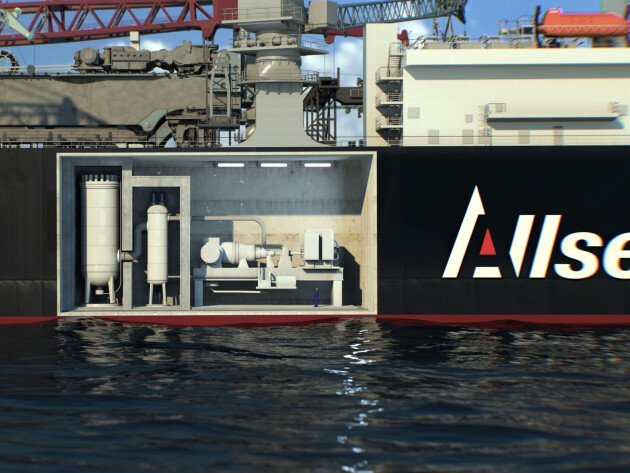
How to finance a ship
Financing a ship in 4 steps
The financing process of building a ship involves several stages and you will have to deal with a wide range of diffrent parties. Including the shipyard, the buyer (shipping company or ship owner), and the financing institutions. This article explains this complex process in finer detail. The process will be divided into to the following 4 phases.
Preparation phase
Payment structure
Financing of the shipyard
Completion and delivery
1. Preparation phase
Negotiations and contracts
To kick-off this financing process the buyer and the shipyard will have to come to an agreement on the construction of one or more ships. This sometimes involves a standard design from the shipyard but it could also be a custom design from the buyer. This will result in a shipbuilding contract, which sets out all conditions for the construction such as:
Delivery
Price
Milestones
It is common that during this process the buy will already start organising the financing of the vessels construction.
Financing for the buyer
The buyer typically requires financial support from an institution to cover necessary down payments during the ship's construction. This support, known as pre-financing or construction financing, helps facilitate the building process.
At the same time, the buyer may seek an institution willing to finance the post-delivery phase, commonly referred to as post-financing.
It is essential to clearly distinguish these two types of financing, as not all institutions that finance shipbuilding are willing to provide construction financing due to its associated risks.
Securing a loan can take time, as the financial institution must assess the buyer’s creditworthiness, the shipyard’s risk profile, and the project’s complexity before making an offer.
Refund guarantee
When the buyer and shipbuilder reach a construction agreement, there is no absolute guarantee that, by the end of the construction period, the ship will meet the pre-agreed requirements. Despite this uncertainty, the buyer must make several down payments throughout the construction process. These payments enable the shipyard to purchase raw materials, pay for labor, and fulfill other operational obligations. To mitigate the risks during construction, the buyer often requests a refund guarantee from the shipyard.
A refund guarantee, typically issued by a bank or insurance company on behalf of the shipyard, ensures that the buyer and its bank will be reimbursed for the down payments if the project is canceled or if the shipyard goes bankrupt during construction. These guarantees often serve as collateral for the buyer’s construction financing.
Before issuing a refund guarantee, the bank conducts a thorough assessment of the shipyard, as it would be obligated to repay the buyer on demand. Without this security (collateral) from the shipyard’s bank, the buyer’s bank is unlikely to provide construction financing, as the risk would be too high.
2. Payment structure
Milestones
The shipbuilding contract typically specifies that payment for the vessel will be made in installments, tied to predefined milestones in the construction process. When a buyer secures financing, the financier usually requires the buyer to first contribute its own funds for the initial down payments before making additional financing available. This approach is known as the "Equity First" principle.
Commonly, the milestones are structured as follows:
Down payment
instalments
Closing payment

3. Financing for the shipyard
The shipyard itself may also need financing to build the ship, especially if the projects are large. This is often done through:
Working Capital
This is a daily cancelable financing arrangement that enables the shipyard to cover operational costs during construction until payments are received from the buyer. It is typically a limited facility, designed primarily to manage liquidity fluctuations between the buyer's down payments and the shipyard’s actual expenses, rather than to fully pre-finance the construction. Additionally, this facility is often insufficient to provide the required guarantees to the buyer.
Guarantee facility
Shipyards therefore often, and perhaps even more so, need a guarantee facility. Banks make this facility available to the yard to provide the refund guarantees to be issued against the down payment received at the various milestones. This allows the yards to use the liquidity received normally for their ‘procurement and fixed costs’ to deliver the ship. Upon delivery, the refund guarantees expire and the yard can use this limit again for a subsequent project.
Sometimes these facilities are combined in the form of a combination facility and made available to the yard.
Finishing and delivery
When the ship is ready, the final inspection takes place. The buyer approves the vessel and the vessel is put under class. The final payment is made. At the same time, the current refund guarantee expires because construction is now complete and the buyer has taken delivery of the vessel. The construction risk is thus completed.
Conclusion
There are of course other possible structures imaginable, which can be agreed between shipyard, buyer and bank. But the process described is the most common way of financing the construction of a ship and provides both the shipyard and the buyer with financial security and structures the cash flow during the lengthy construction process of a ship.
Both the shipyard's bank and the buyer's bank have an important role in the process. The shipyard's bank mainly runs operational risk on the making of the ship.



